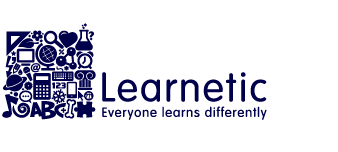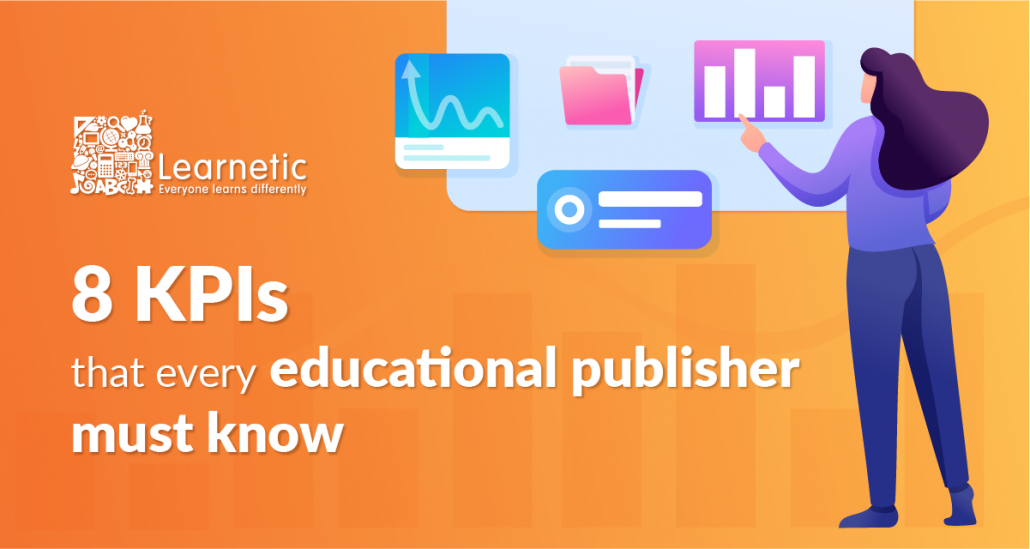The metrics and KPIs that every educational publisher needs to know
In days gone by, the only metric a publisher had of its book’s effectiveness was the sales figures. If a book was selling well, it must be doing something right. If it wasn’t selling, there must be an issue with some aspect of the book. Exactly what was good or bad about a book was often very difficult to identify. It was down to the publishers to use intuition, estimates and market research to try and pinpoint the secret of their success – or failure.
In the world of digital publishing, there is no such guesswork. Publishers now have an array of KPIs at their fingertips that ensures they can keep doing what works well and cut out what doesn’t. So what are these publishing metrics? How is this data obtained? And what impact can these metrics have on learners, educators and publishers?
1. The length of time students spend on each activity
The ‘Big Data’ gathered by the Learning Management System (LMS) can provide some incredibly insightful small details. The average length of time that a student takes to complete an activity is easy to establish and useful for all manner of reasons. It allows publishers to see if they have pitched an activity with the correct level of challenge. And by passing this information on to educators, it enables far more effective lesson planning and ensures not a minute is wasted. It also means teachers can gauge how well individual students are performing. Not only against their peers, but against the average time of thousands of users.
2. The frequency of mistakes made in each activity
Establishing the average number of mistakes students make whilst completing an activity is an excellent indicator of the activity’s difficulty. Too many mistakes may mean that the information provided in the resources is insufficient to be able to complete the task. If mistakes are very rare, it means the task does not require enough critical thinking skills. In either case, it means that teachers will soon stop using these resources in their lessons. And that is not good news for publishers.
3. Course ‘bounce rates’
Having students complete courses is extremely important for educational establishments. Funding is often reliant on students finishing the entire course. Also, having students drop out early can have a detrimental impact on an institution’s place in educational ‘league tables’ with their competitors. There are many reasons why students fail to complete courses but a lack of engagement and problematic course content are major factors. A course’s ‘bounce rate’ helps to indicate how appealing its resources are. Also, If the resources are shown to have a positive impact on ‘bounce rates’, this information can be used in the marketing materials of both publishers and educational institutions.
4. The demographics of the users
The more you know and understand about your end users, the more you can tailor and target your resources to suit their requirements. Digital resources enable publishers to get a firm handle on the ages, genders and economic backgrounds of the people who study and learn from them. Valuable lessons can be learnt when it comes to why certain courses appeal more to some groups and less to others. Marketing campaigns of publishers, like the schemes of work created by educators, can then be amended accordingly.
5. The most popular and least popular aspects of a course
When resources are sold by the book, it is a zero-sum game. Some people look at a book and decide that they, on the whole, like it and go on to buy it. Others decide, on balance, that they don’t like it enough and don’t complete a purchase. In truth, there are always aspects, chapters and individual spreads in textbooks that are more popular with students and teachers than others. Digital publishing makes it easy to identify exactly which parts are crowd-pleasers and which parts are seldom used. Armed with this information, publishers are then able to give their customers more of what they love and less of what they don’t. This leads to better outcomes for the students, happier teachers and better sales for the publishers.
6. The order in which the content of the course is accessed
It is easy to assume that students and teachers will access the resources in the order that the publishers intended them to. A great deal of thought and effort has gone into creating book plans after all. But, as any teacher will tell you, resources often take on a life of their own once they enter the classroom. Going digital allows publishers to see exactly how their resources are being used. This includes the order that the chapters are read in as well as the order in which each activity is attempted. By gaining a better understanding of how their resources are being used, publishers can adapt and amend their publications so it better fits the needs and requirements of their customers.
7. Make in-depth comparisons between your own resources
It is common practice for publishers to offer more than one resource for the same topic and educational level. By adopting different approaches to the same subject matter, they can appeal to different markets. For example, one set of resources could have accessibility as its main focus and attempt to engage and educate learners of all abilities. Another resource from the same publisher could target high-ability learners and focus on academic rigour and what is required to achieve the very highest grades.
By publishing digitally, it is possible to directly compare the performance of both resources. Publishers can see who is using their resources and how and where they are using them. These insights are invaluable in letting them know how well they are catering for their target markets. They will also better understand why one set of resources is outperforming another.
8. Digital evolution
Digital resources give publishers insights that publishers of books could only dream of. And these insights offer such a competitive and commercial advantage it is hard to see how those who fail to embrace digital publishing will survive. Digital publishers will become finely attuned to their customer’s needs, wants and requirements and can create products to fulfil these. Those who remain wedded to the 20th-century model of publishing and do not access the ‘Big Data’ provided by an LMS will be left in the dark. They will be left making best guesses about why their book has succeeded or failed. At the same time, digital publishers will control more and more of the market as their products continually evolve to give their customers exactly what they want.
By choosing Learnetic as the digital partner, publishers will have access to all of these KPIs and metrics through the Cloud-based mCourser LMS. The data from every interaction of every student that engages with their resources will be collected. This could lead to profound changes in the resources they develop, the number of customers they attract and the profits they make.





